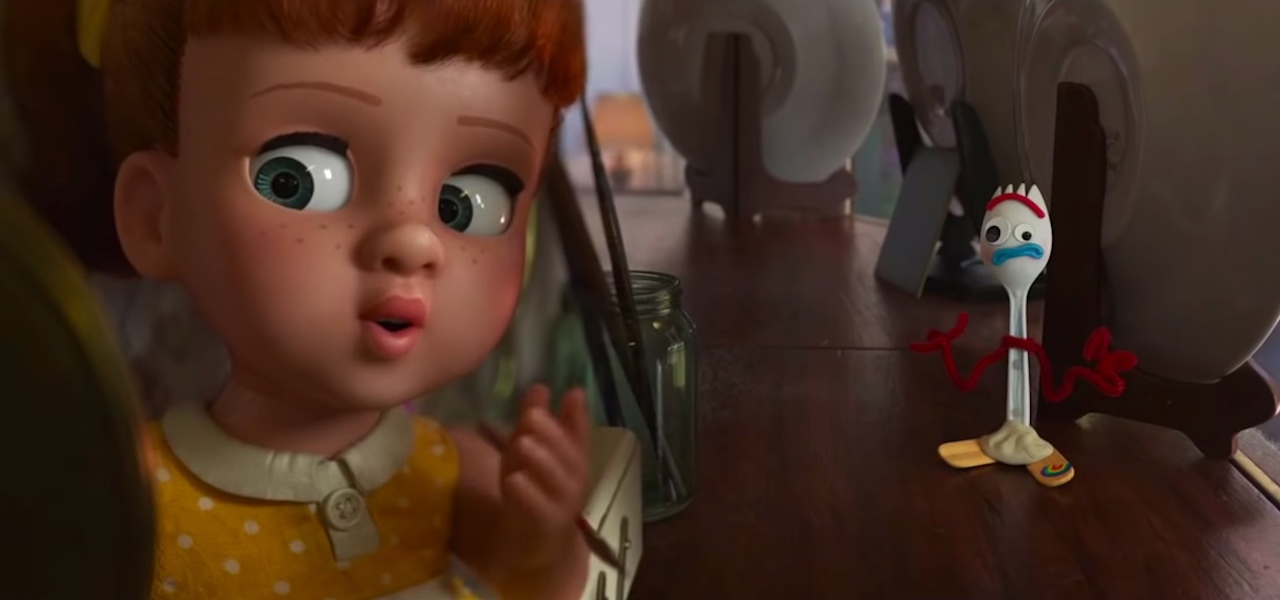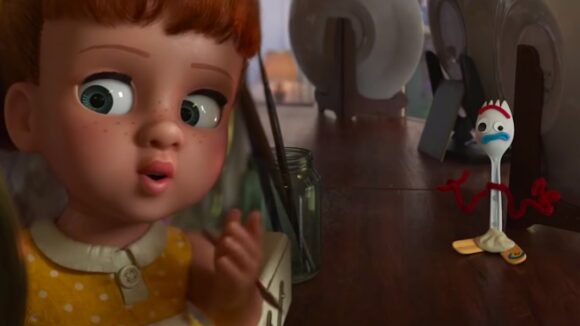

How ‘Toy Story 4’ Was Influenced By Live-Action Cinematography
When it came out in June, Toy Story 4 was feted for taking cg animation to new heights. And that involved borrowing heavily from the language of live-action cinema, as this video essay argues.
In a brisk six minutes, Youtube commentator Evan Puschak (a.k.a. Nerdwriter1) runs through some of the ways in which Pixar’s latest feature mimics the stylistic effects of real cameras and lighting. He credits Patrick Lin, director of photography on Toy Story 4 and many other Pixar films, for pushing the studio’s animation in this direction.
For instance: split-diopter shots. In live action, this entails using a special camera lens attachment that can make elements in both the foreground and background appear equally in focus. This method of simulating deep focus generates an uncanny feeling, as it’s palpably artificial. Which is why, according to Puschak, Toy Story 4 replicates the effect in a scene with the creepy doll Gabby Gabby.
In another example, Puschak observes that this is the first Toy Story film to be made in the 2.39:1 aspect ratio. This allows the team to play with the distinct look of anamorphic lenses, which are used in widescreen formats. This look, with its subtle distortions and shallow focus, is associated with the character of Bo Peep, while Woody is depicted with the more conventional spherical lenses.
Puschak has a knack for explaining arcane matters of cinematography in plain, humorous terms. His insights into Toy Story 4′s virtual camerawork made us appreciate the sophistication of Pixar’s filmmaking all over again.

.png)